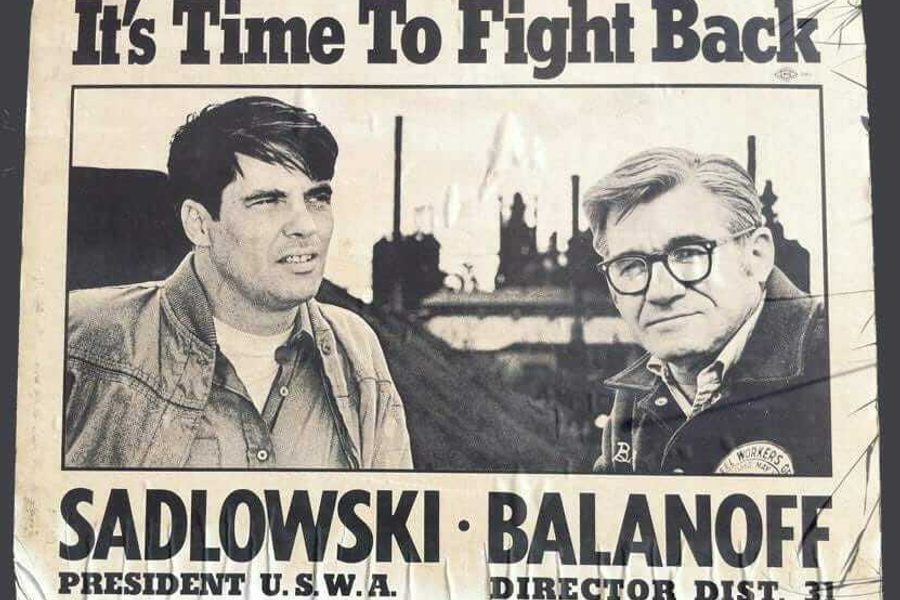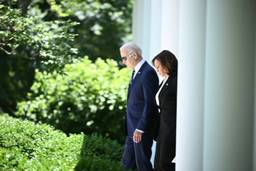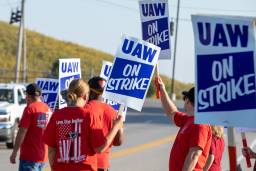Remembering Ed Sadlowski: Labor Activist, Democratic Socialist and Crusader for the Rank-and-File
Jeff Schuhrke

The labor movement, the left, and the city of Chicago lost an icon Sunday with the passing of legendary steelworker Ed Sadlowski at the age of 79.
“When you think of Chicago and labor, you think of someone like Eddie,” Studs Terkel once remarked.
Sadlowski was best known for his insurgent run for the presidency of the United Steelworkers (USW) in 1977, when he was 38 years old. Though largely forgotten today, Sadlowski’s “Steelworkers Fight Back” campaign captivated the nation, with Terkel saying it was more important than that year’s presidential election between Gerald Ford and Jimmy Carter.
During the 1970s, a young, more diverse generation of workers, infused with a spirit of militancy not seen since the 1930s, challenged the leadership of out-of-touch union officials who tended to be more comfortable with the bosses than with the rank and file — a movement for union democracy that eventually led to the founding of the publication and organizing project Labor Notes. Sadlowski’s campaign was widely seen as a battle for the soul of the labor movement, pitting militant social justice unionism against complacent business unionism.
In 1973, the entrenched leaders of the USW, who called themselves “the official family,” entered into an Experimental Negotiating Agreement (ENA) with the major steel companies, agreeing not to strike even after contracts had expired. The Steelworkers’ 1.4 million members were not consulted.
While high-ranking union officials like USW President I.W. Abel thought surrendering the right to strike was the future of labor-management relations, Sadlowski believed it was time for a return to old-fashioned worker militancy. His heroes were Eugene Debs, Joe Hill, Mother Jones, John L. Lewis and Paul Robeson. His basement was a warehouse of labor history artifacts and memorabilia.
“The workers and the boss have nothing in common. It is a class question,” Sadlowski once told a reporter. “I guess maybe I’m a romantic, but I look on the American labor movement as a holy crusade, which should be the dominant force in this country to fight for the workingman and the underdog and make this a more just society.”
In stark contrast to most labor leaders of the time, Sadlowski had opposed the Vietnam War and supported the civil rights movement. “There’s no way you can be a union man and a racist,” he insisted.
Born into a steelworker family on Chicago’s Southeast Side in 1938 — just one year after the Memorial Day Massacre—Sadlowski learned the values of working-class solidarity and the history of the labor movement from his father, who was active in the CIO organizing drive that built the USW.
At age 18, Sadlowski got a job as an oiler in the machine shop of U.S. Steel South Works, earning the nickname “Oilcan Eddie.” At 25, in an upset victory over the incumbent leadership, he was elected president of USW Local 65 where he oversaw 23,000 workers.
When the USW’s “official family” agreed to the ENA in 1973, Sadlowski declared it was “time to fight back” and ran for the directorship of USW District 31 — the union’s largest district, representing nearly 300 locals across Chicago and Gary, Indiana.
After the handpicked candidate of “the official family” won under suspicious circumstances, the Department of Labor investigated and found massive fraud, ordering a new election in November 1974 under federal supervision. This time, Sadlowski won nearly 2 to 1, gaining national fame. Rolling Stone said he “may be this country’s next great labor leader.”
Soon after taking over District 31, Sadlowski launched his “Steelworkers Fight Back” campaign for the presidency of the union. Building a multiracial coalition of rank-and-file workers, the campaign fused the spirit of the labor upsurges of the 1930s with the New Left politics of the 1960s and 1970s.
Sadlowski crisscrossed the country campaigning at USW locals throughout 1976, speaking to packed union halls and appearing on national television, even debating his opponent, Lloyd McBride, on NBC’s Meet the Press.
“I have heard many good speakers in my life, but no one any better than Ed Sadlowski on a good day,” labor lawyer Thomas Geoghegan noted in his memoir. “He could say the word ‘Boss’ with fifty-five different nuances of contempt, and use just the right one for each occasion.”
Sadlowski’s movement faced resistance in the run-up to the election. Steelworker Ben Corum was shot in the throat while handing out “Fight Back” literature in Houston, but survived. Meanwhile, old-guard union leaders — including the octogenarian president of the AFL-CIO, George Meany — smeared the campaign as the pet project of “limousine liberals” and other “outsiders.”
When the election was held in February 1977, Sadlowski got an impressive 44 percent of the vote, but not enough to win. He lost union locals in the South and Canada, where “Fight Back” did not have election observers. Though fraud was suspected, it was never proven.
Despite the defeat, Sadlowski’s movement ultimately pushed the United Steelworkers to become a more democratic union, allowing members the right to vote on important decisions like the approval of contracts and whether to raise dues.
In more recent decades, Sadlowski was active in the Democratic Socialists of America, telling a crowd of USW members in 2009 that “there is nothing wrong with democratic socialism. That’s the direction we really have to go in.”
He also continued to be a vocal supporter of union democracy and an inspiration to working-class activists, earning a spot in the Illinois Labor History Society’s Union Hall of Honor in 2012.
“Ed said what few in power had the decency to admit: that ordinary workers have intelligence and creativity and grace, and deserve the rights and working conditions that allow us to live with dignity and possibility,” Chicago Teachers Union (CTU) Vice President Jesse Sharkey said in a statement this week.
Among those Sadlowski inspired were his own children. His daughter, Susan Sadlowski Garza — a former activist in the CTU — was elected as Chicago’s 10th Ward Alderman in 2015 and was a delegate for Bernie Sanders in 2016. His son, Edward A. Sadlowski, is a longtime union organizer currently serving as Deputy Executive Director of the Milwaukee Teachers’ Education Association.
“I love the labor movement,” Ed Sadlowski once said. “It’s been everything for me, for my family. We could change the world, change the distribution of the wealth we create, we can do this democratically — and the labor movement can play a big part in this.”
According to his family, Sadlowski died on Sunday after a battle with Lewy body dementia. He is survived by his wife of many decades, Marlene, four children, 11 grandchildren, two great-grandchildren, “and untold sisters and brothers in the labor movement.”
On announcing Sadlowski’s passing, his son Edward invoked the famous words of another labor legend, Joe Hill — “Don’t mourn, organize!”
Jeff Schuhrke is a labor historian and assistant professor at the Harry Van Arsdale Jr. School of Labor Studies, SUNY Empire State University. He is the author of Blue-Collar Empire: The Untold Story of US Labor’s Global Anticommunist Crusade.







